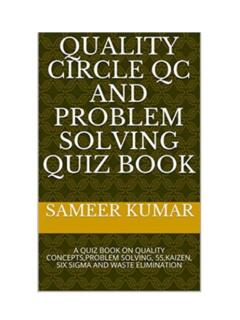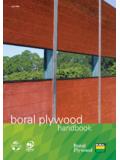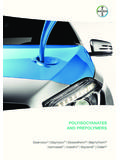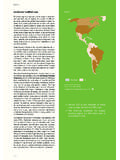Transcription of SUGGESTED CHECKLIST FORSUGGESTED …
1 SUGGESTED CHECKLIST FOR FOOD SAFETY. (MEDIUM TO SMALL FOOD ESTABLISHMENTS). FOOD SAFETY CHECKLIST . CONTENTS. 1. Procurement of Raw Material 2. Storage of Raw Materials 3. Preparation of raw materials 4. Cooking/Processing 5. Storage of cooked food 6. Preparation of cooked food before serving 7. Serving of cooked food 8. Sale or display of food 9. Storage of surplus foods 10. Quality of water & Ice 11. Utensils & Equipments 12. Cleaning & Hygiene of establishment 13. Cleaning & Hygiene of surrounding/environment 14. Lighting facility 15. Garbage disposal facility 16. Pest control 17. Facilities for Personal Hygiene 18. Personal Hygiene Abbreviations used: Y: Yes N: No NA: Not Applicable RM: Raw material 2. FOOD SAFETY CHECKLIST . An exhaustive CHECKLIST is prepared using 22 different measurable issues as follows. However, depending on the type of the food outlet dhaba or mid level eating or fast food joint etc.
2 Some could be specifically selected for proper evaluation. Exact criteria of evaluation may also have to vary based on these considerations. At the end some special considerations will be needed for specific varieties of food, which are high risk and have been separately listed. 1. Procurement of Raw Material Criteria Checks Y/N/NA. Source Whether procured from authorized/ certified sources Freshness Fresh appearance (intact, without bruises/spots, patches, shrivelled etc.). Off odour/ spoilage/ putrefaction Chilled and frozen products are received at correct temperature Quality RM/ Products are free from any physical impurities ( dirt, dust, stones, wood, signs of infestation, pest or their remains, metal pieces or any other foreign matter). Temperature of potentially high risk food is at or below 4 0C. Temperature of frozen foods is -18 0C or below RM is free from any off odour RM is Free from any fungal (frothy) growth Quality of Packaging and pack seals are intact packaged Pack is without holes food Pack air/vacuum intact products Pack is without leakage, dents, puffing and rusting signs Whether any signs of thawing or temperature abuse ( water droplets inside the pack etc.)
3 RM/products are under best before'/'expiry' or Use by' date Products have green or brown mark on the pack according to its category (veg. or non-veg.). 2. Storage of Raw Materials Criteria Checks Y/N/NA. Storage area All supplies are stored at proper storage areas Every storage should have temperature gauge Storage area is clean and free of debris, empty boxes or other refuse Storage area is dry and well ventilated and well lighted Scaling of wall paint is removed Storage area is free from insects, pests or their remains Stored products are completely covered Raw material arranged & used on FIFO (first in first out) and FEFO. 3. (First Expired First Out) basis and marked*. Raw materials are stacked properly (heavy cartons, glass jars stored on lower shelves). Raw material stored 6 inches above the ground and away from the wall on sound pallets where ever applicable.
4 Pallets are having facility for air circulation Chemicals and cleaning supplies are stored away from food and other food related supplies (packaging material etc.) under lock and key Non-veg. & veg. products are kept physically separated or stored in different containers/racks/Compartments. Raw materials are kept separately with proper labelling from semi- processed and processed (cooked) foods. All products are stored covered in clean and intact containers Dry Storage All foods and paper/packaging supplies are stored off the floor and away from the walls (at least 6 inches). There are no bulging or leaking canned and Tetra Pack foods in the storage All products are labelled with name and date (expiry/delivery). Cold storage Proper temperatures are maintained (40C or below for chillers and -180. C or below for freezers). Food is stored 6 inches off the floor Calibrated thermometer is used for checking temperature Cold storage room/refrigerator is not over-stuffed with food products Cooked foods are stored above or separately from raw foods All foods are properly wrapped, labelled and dated FIFO & FEFO are followed Perishable products (milk, meat, butter etc.)
5 Are stored in refrigerator only at temperature of 40C or below Products with strong odours are kept covered in refrigerator * Store stocks just delivered behind stocks already in storage. First use the products with the nearest shelf life date, even if they were delivered later. Remove products whose shelf life has expired. 3. Preparation of raw materials Criteria Checks Y/N/NA. Only potable water from safe source is used for preparation of raw General materials/or as an ingredient in food products Work surfaces are cleaned properly before starting work Perishable products are kept in the fridge at temperature of 40C or below and consumed before its best before'/'expiry' date Raw and cooked products are stored physically separated 4. Unused thawed food is discarded Only clean and intact equipments are used Products are kept covered after preparation / cooking Sieving/straining Sort all raw materials ( grains, fruits & vegetables etc.)
6 And or sorting or remove undesirable/spoiled parts before use cleaning Sieve all dry, powdered raw materials ( flour, powdered sugar). before use Strain all liquid raw materials ( syrups etc.) before use Washing Only potable water is used for washing of food products Uncooked, ready-to-eat fruits & vegetables are disinfected with 50. ppm chlorinated water before cutting, peeling or serving Wash water is not re-used for washing equipments, utensils, containers or food products Thawing of food Frozen products are thawed in refrigerator/microwave/convection products oven or under running potable water well before cooking Only required portion of the food is thawed at a time Products from which melt-water is released are kept in a drip tray at the bottom of the refrigerator Thawed products are used immediately and not refrozen or kept in chiller 4.
7 Cooking/Processing Criteria Checks Y/N/NA. Cooking of Food is cooked thoroughly with temperature reaching at least 700 C. food Salads/ garnishes/uncooked ready-to-eat foods are prepared from thoroughly washed RM. Processing/cooking is done in clean and hygienic area Clean equipments and utensils are used for cooking/processing Separate equipments and utensils are used with colour coding, Red colour code for non-veg and green colour for veg. Frying oil/fat is changed immediately when there is colour change, visible fouling, syrupiness, scum formation Processing of food/handling/serving is done in covered areas Water used in the food processing, washing is potable water used in the beverages or served for drinking is potable water 5. 5. Storage of cooked food Criteria Checks Y/N/NA. Storage of Cooked food is stored covered and at appropriate temperature cooked food Cold foods at 40 C or below (in refrigerator).
8 Hot foods at 600 C or above (hot holding). Veg. & non-veg. products are stored separately and properly labelled with day and date of preparation Salads, garnishes, or ready-to-eat foods are immediately stored in clean covered containers and refrigerated 6. Preparation of cooked food before serving Criteria Checks Y/N/NA. Preparation Cold foods are served cold and hot foods hot of cooked Cooked products are heated upto 700 C or above before serving food before Cooked food is not left at room temperature for more than 2 hours. serving All uncooked salads, fresh fruits & vegetables etc. are freshly prepared to the extent possible Surplus food is not mixed up with freshly prepared food Transported cooked food is consumed/used within 4 hours of its arrival 7. Serving of cooked food Criteria Checks Y/N/NA. Serving of Food is served in clean and intact utensils/one-time-use disposables cooked food Single use/disposable items are not re-used Clean and non-toxic material is used for packing of food.
9 Printed paper is not used for wrapping/storing or serving food Re-usable serving utensils/items are washed, cleaned & disinfected after each use All tables and food serving counters are clean Personnel Personnel serving food wears clean cloths Hygiene Personnel serving food is not handling food with bare hands & uses spatula/spoon etc. for serving 8. Sale or display of food Criteria Checks Y/N/NA. Sale or Sale/display counters are intact, clean and properly maintained display of Floor below & behind the counters and display racks are clean food The refrigerators are clean and without off-odours Spoiled and damaged products are not displayed Food products (except whole fruits and vegetables) are kept covered at 6. display counter. Counter display of cold foods & beverages is at 4 0 C or below Counter display of hot foods is at 60 0 C or above Veg.
10 & Non-veg. products are properly labelled, displayed separately or physically separated and displayed in separate compartments. Products displayed are labelled and name of the product, type (veg. or non-veg.) manufacturing date & expiry date (if any) shall be written clearly on the label Whether the FIFO (First In First Out) , FMFO (First Manufactured First out) & FEFO (First Expired First Out) principles are followed 9. Storage of surplus food Criteria Checks Y/N/NA. Storage of Surplus food is consumed before expiry' / use by' date ( packaged surplus milk, cream, sauces etc.) and for other kinds of food, it should be used foods till fit for consumption. Surplus food stored in the refrigerator Surplus thawed food is discarded Perishable products are consumed immediately and not stored for further use Canned products once opened are transferred in the suitable covered containers and kept refrigerated 10.












